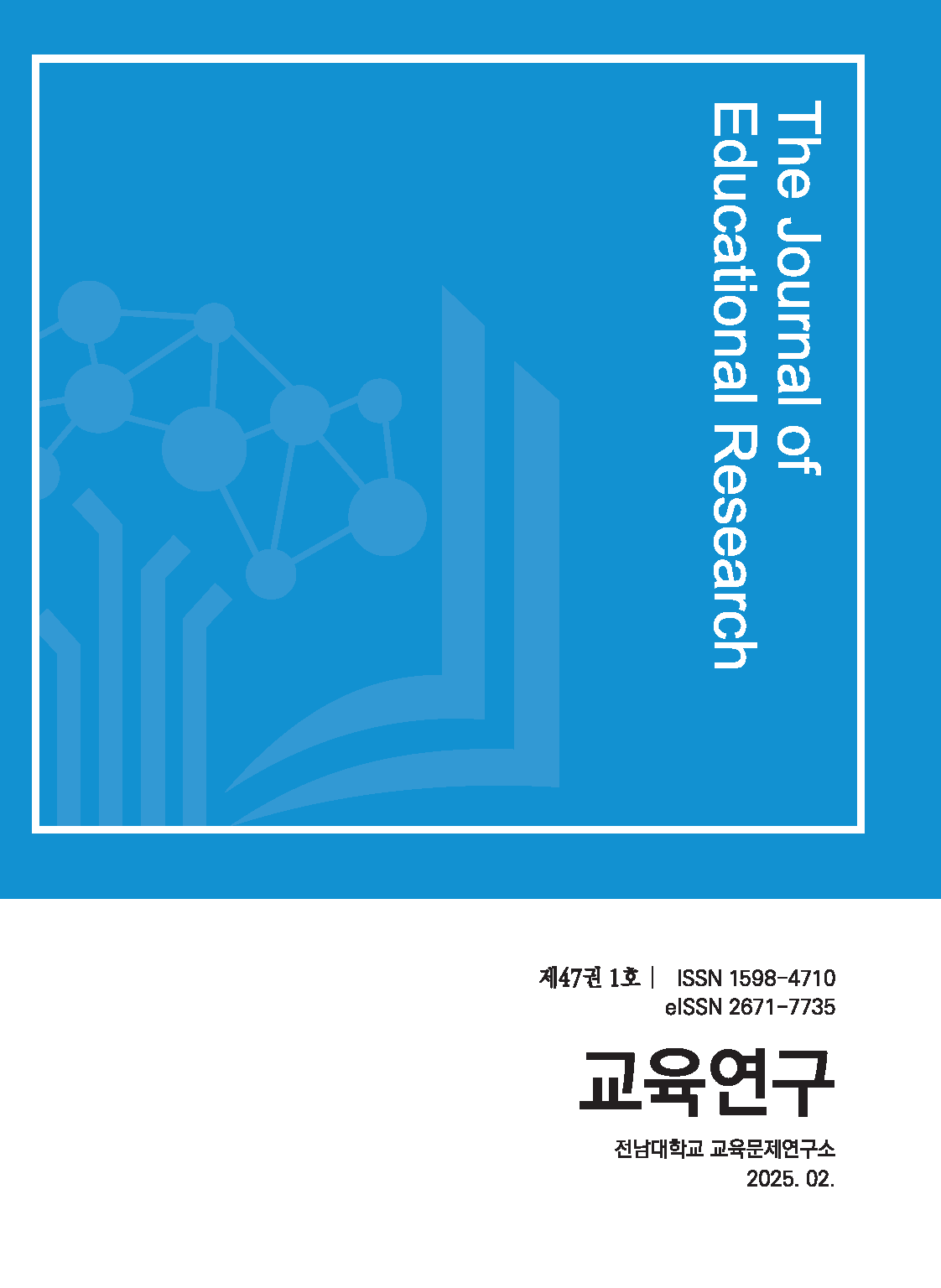청소년의 자해 과정 및 멈춤 과정에 대한 질적연구
A Qualitative Study on the Process of Self-Harm and Its Cessation among Adolescents
- 전남대학교 교육문제연구소
- 교육연구
- 제47권 제1호
-
2025.021 - 28 (28 pages)
-
DOI : 10.35510/JER.2025.47.1.1
- 286

이 연구의 목적은 청소년의 자해 경험과 이를 멈추는 과정에 대해 질적으로 탐색하는 것이다. 이를 위해 자해 경험 청소년 7명과 심층 면담을 진행하였으며, Giorgi의 현상학적 분석 절차를 활용하여 분석하였다. 분석 결과에 의하면 연구 참여자들은 자해 전에 학교폭력 피해, 부모 간 갈등과 이혼, 학대 등의 환경을 경험하였다. 이로 인한 심리적 고통을 아무에게도 터놓고 얘기할 수 없었고, 자신을 비난・혐오하면서, 더 이상 혼자 버티기 힘든 상태로 내몰렸다. 자해의 과정에서 자해는 죽을 만큼 힘들지만 살고 싶다는 표현이자 죽지 않기 위한 방어였다. 또한, 자해의 멈춤과 재시도가 반복되는 가운데, 자해는 점점 심화되었고, 자살 시도로 이어질 위험을 내포하고 있었다. 자해 멈춤의 과정에서 멈춤의 계기는 부모의 눈물, 애정을 주는 친구, 관심 가지고 얘기를 들어준 교사나 상담사, 자신에 대한 생각의 변화와 연민, 미래에 하고 싶은 일이 생김 등 자해보다 더 소중한 것들이 생겨났기 때문이었다. 흉터로 인한 불편함, 내가 잘못될 수도 있다는 두려움, 자해 행위의 귀챦음 등은 자해를 멈춘 뒤 재시도를 주저하게 만드는 요인이었다. 자해 멈춤을 유지하는 데 도움이 되는 것으로 약물치료나 상담과 같은 전문적인 도움, 친구들과 나누기, 스트레스 대처의 변화 등이 있었다. 연구 결과를 토대로 자해를 멈추고 유지할 수 있도록 돕는 방안에 대해 논의하였다.
The purpose of this study is to qualitatively explore adolescents' experiences with self-harm and the process of cessation. To this end, in-depth interviews were conducted with seven adolescents who had experienced self-harm, and Giorgi's phenomenological analysis procedure was utilized. The findings revealed that participants experienced adverse environments, such as school bullying, parental conflict and divorce, and abuse, prior to engaging in self-harm. They reported an inability to share their psychological distress with anyone, self-blame and self-hatred, and being driven to a state where enduring on their own became unbearable. During the process of self-harm, participants described it as a means to express their extreme suffering and a defense mechanism to avoid death despite feeling overwhelmed. However, repeated cycles of cessation and resumption led to the intensification of self-harm and increased the risk of suicide attempts. In the cessation process, key factors that prompted participants to stop self-harming included seeing a parent’s tears, forming supportive friendships, receiving attention and care from teachers or counselors, a shift in self-perception and self-compassion, and developing future aspirations. These elements provided a sense of value that outweighed the act of self-harm. Additionally, practical challenges, such as the inconvenience of concealing scars, fear of unintended consequences, and the tedious nature of preparing and executing self-harm acts, contributed to hesitations about resuming self-harm after cessation. Factors supporting sustained cessation included professional interventions such as medication and counseling, sharing experiences with friends, and changes in coping strategies for stress. Based on these findings, the study discusses strategies to support the maintenance of self-harm cessation among adolescents.
Ⅰ. 서 론
Ⅱ. 연구 방법
Ⅲ. 연구 결과
Ⅳ. 결론 및 논의
참고문헌
(0)
(0)